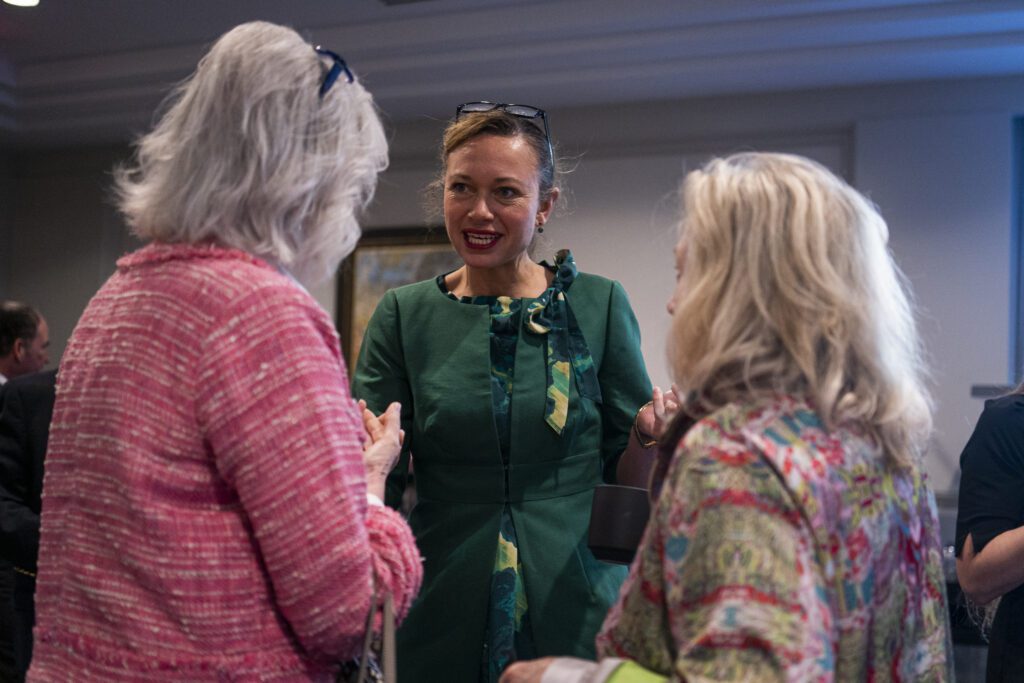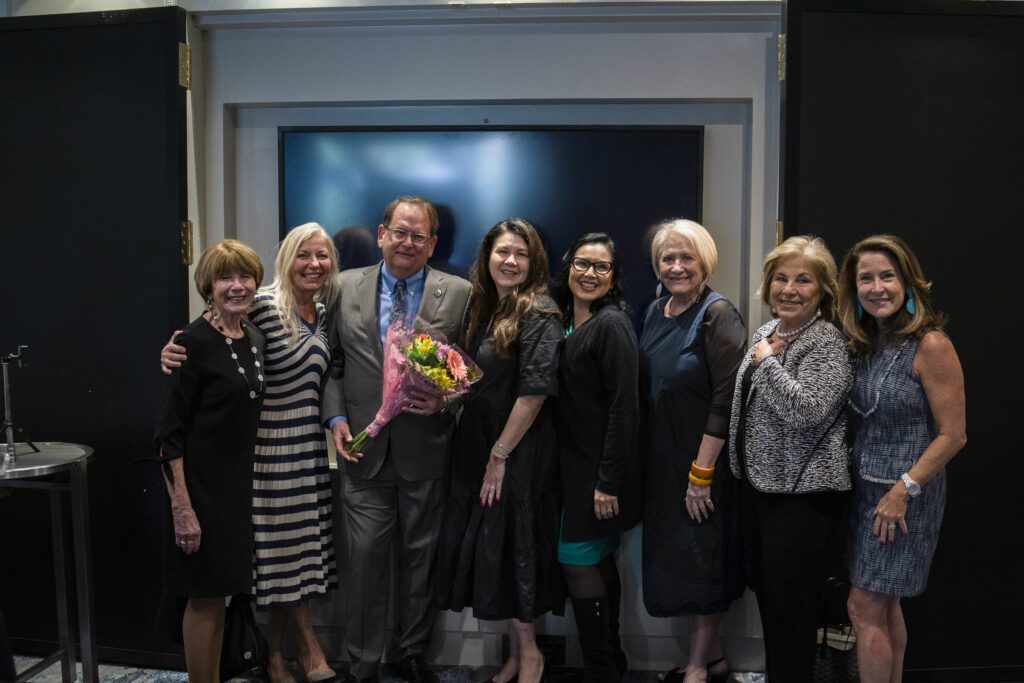Hudson Shares New Mission, Preservation Plans at Tudor Place
By • April 24, 2023 One Comment 2284

Three invitations were extended by The Georgetowner’s April 20 cultural power breakfast speaker, Mark Hudson, executive director of Tudor Place, the National Historic Landmark on five and a half acres at 1644 31st St. NW in Georgetown.
“Come and spend some time in our garden,” Hudson said, calling it an “opportunity for quiet reflection.” He then reminded attendees that the annual Spring Garden Party will take place on May 24.
Hudson’s third invitation at the breakfast, held at the Four Seasons Hotel, was to the 2023 Landmark Lecture Series, subtitled Centering Stories of Enslavement at Tudor Place. Four evening lectures remain in the free spring-and-fall series.
Next, on May 16, Walter Hawthorne of Michigan State University and Daryle Williams of the University of California, Riverside, will talk about Enslaved, an open-source, open-access platform that recovers and aggregates online the names and life stories of enslaved persons.
The choice of theme for this year’s lectures was guided by a commitment to “telling the whole story of Tudor Place,” Hudson explained, the outcome of a strategic planning process that began in June of 2020, during “the darkest days of the pandemic” and shortly after the murder of George Floyd.
That process also produced a new mission statement, beginning: “Tudor Place preserves the stories of six generations of descendants of Martha Washington and the enslaved and free people who lived and worked at this Georgetown landmark for nearly two centuries. By examining their legacy, we challenge ourselves and our visitors to celebrate the triumphs and confront the complexities of the past.”

Photo by Jordan Tovin.
Hudson described efforts to learn more about the individuals enslaved at Tudor Place, numbering about 15 in early 1800s — though the Peter family, Martha Washington’s descendants, enslaved hundreds in Montgomery County. Dovetail Cultural Resources Group conducted an archaeological dig in the site’s orchard area, where a dwelling of enslaved persons stood. In addition, connections to Mount Vernon have been investigated.
To share resources and avoid duplication of effort, cooperation on research and interpretation with other Georgetown organizations is on the drawing board.
This expanded interpretation is what is expected of a 21st-century museum, according to Hudson, who said he wants visitors and others connected with Tudor Place to “feel some discomfort” regarding the history of enslavement.
Pre-Covid, Tudor Place had been serving about 35,000 people annually, Hudson said. Following recent consultations, he realized that “we have been confusing community engagement with audience engagement” and that community engagement was “about more than marketing.”

Photo by Jordan Tovin.
What does Hudson not want a visitor to say after experiencing Tudor Place? That it was just like every other historic site.
Named Tudor Place “for reasons we don’t know,” said Hudson, the Federal-style house with its “signature” temple portico was built to designs by William Thornton, first Architect of the Capitol. Its bicentennial was celebrated in 2016, a year after Hudson’s arrival from the Vermont Historical Society, and its 30th anniversary as a public museum — the vision of Armistead Peter III, who set up a foundation to support its operation — in 2018.
Hudson shared details about progress on the site’s Preservation Master Plan, developed by Hartman-Cox Architects. As a conservation and sustainability measure, two 16,000-gallon water-collection cisterns were installed in 2019. Ground was broken last fall on an addition to the Mower House to house garden equipment and a natural gas generator.

Photo by Jordan Tovin.
Next up is the renovation and expansion of the garage building to create spaces for object and document storage, exhibitions and classes, with a new greenhouse and a garden-staff work area attached.
The final component will be a replacement of the obsolete mechanical systems in the main house and the addition of a fire suppression system. About $15 million needs to be raised, said Hudson, who hopes to have all the work completed by the nation’s 250th birthday: July 4, 2026.
“Clock’s ticking,” he commented.

Photo by Jordan Tovin.

Photo by Jordan Tovin.


Great job, Mark